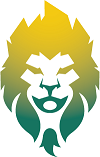Back stretching with arms stretched vertically
Technical sheet on stretching the back 2 (arms stretched vertically):
You are standing with your feet hip-width apart. First of all, you will slightly bend your knees. Follow with a retroversion of the pelvis by simultaneously contracting your abs and buttocks.
Lateral elevation of your arms and cross your fingers, which will be above your head, should be done on a hollow stomach and contracted abdominal muscles.
Or you can cross your fingers directly at the navel and rotate your wrists so that your palms move forward. Then stretch your arms above your head, and push with your arms in the idea of extending your back.
Be sure not to overbend in this exercise, remember to secure your pelvis properly in order to maintain pelvic retroversion.
To do a good stretch, you will have to respect these rules:
Remember to breathe continuously ( Deep breathing cycle of inhalation and exhalation)
Never block your breathing when stretching.
Do your stretching for at least 30 seconds
Stretching will always be done gradually. So that your muscles can get used to this type of work.
Stretched muscles:
Main muscles: Large dorsal, large round, lumbar, spinal, spinal, trapezius
Secondary muscles :
Role of the back:
Support and protection role. The spine gives the back a role in supporting the head and protecting the spinal cord.
Role in mobility and posture. All the components of the back preserve the posture of the trunk and thus maintain the standing position. The structure of the back allows many movements such as trunk twisting, trunk bending or pulling movements.
Possible back pathology:
Back pain is defined as localized pain that most often originates in the spine and usually affects the surrounding muscle groups. Depending on their origin, three main forms are distinguished: neck pain, back pain and low back pain.
Sciatica, characterized by pain starting from the lower back and extending into the leg. They are frequent and are due to compression of the sciatic nerve. Different pathologies can be at the origin of these pains.
Different pathologies can lead to the progressive degradation of cellular elements. Osteoarthritis is characterized by wear and tear of the cartilage protecting the bones of the joints. Disc herniation is the expulsion of the intervertebral disc from the back of the nucleus by wear and tear. This can result in compression of the spinal cord or sciatic nerve.
Different deformations of the column may appear. Scoliosis is a lateral displacement of the spine. Kyphosis develops with excessive back curvature at shoulder height, while lordosis is associated with increased lumbar arch.
Lumbago and stiff neck. These pathologies are due to deformities or tears in the ligaments or muscles, located respectively in the lumbar region or in the cervical region.

